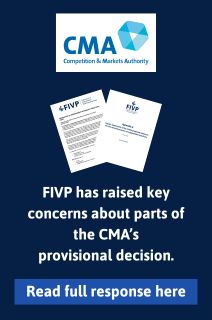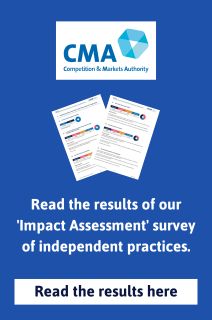
The Federation of Independent Veterinary Practices (FIVP), which represents independent veterinary practices across the UK, responds to the concerns raised by the Competition and Markets Authority (CMA).
At the outset, it is important to note that this review is only in respect of veterinary services for household pets, so does not include any review of the farm and equine services. Whilst it is in respect of veterinary services for household pets, this includes all of the following:
- First opinion practices
- Out-of-hours providers
- Referral centres
- Veterinary hospitals
- Crematoriums
- Laboratories
- Pet health plans
- Medication.
As part of the review, the CMA has identified that, in 2023, 60% of practices providing services to household pets were under the corporate ownership of one of the 6 main corporate groups (IVC Evidensia, Vets4Pets, CVS, Vet Partners, Medivet, and Linnaeus). This figure could be even higher now.
The CMA believe the overall market for those services provided to household pets to be in the region of £5.7bn, with first opinion veterinary services accounting for between £2bn and £2.5bn of that total.
The Office for National Statistics has outlined that the price of veterinary services has increased by 50% since 2015. Whilst it is acknowledged that prices have often increased at a greater rate than headline inflation, when compared to industry-specific inflation, those price rises have been warranted. In particular, salary costs have increased substantially, contributing to higher practice costs.
One of the main challenges has been the recruitment of veterinary surgeons, due to a shortage, which has had a significant impact on pricing structures. This shortage has been further affected by recent changes to the visa requirements for veterinary professionals from abroad that wish to work in the UK, closing the arrival of new veterinary professionals into the country.
Speaking on behalf of independent veterinary practices, overall profit margins have remained largely consistent over the past 5 years i.e. the increase in prices was offset by higher costs. However, it is also acknowledged that there are areas of the profession where profit margins are likely to have increased as a result of other changes in that period of time.
FIVP would like to see, as a result of this enquiry the following:
- Clearer identification of ownership of practices
- Clearer transparency on the levels of prices
- Greater obligations in respect to transparency of pricing for subsequent procedures – including providing written fee estimates and outlining a number of treatment levels, as opposed to offering treatment plans at the highest price. This transparency may be challenged by variations in treatments – including four different species (dogs, cats, rabbits, and exotics), three different time zones (day, evening, and night) and eight different weight ranges. This would also need to consider the hundreds of procedures and medications available.
- Clarity over the ownership and any incentives received for referrals to associated businesses. This would include referral centres, out-of-hours work, and external laboratory and cremation services.
- A review of prescription fees that are fair to the client with the proviso that veterinary practices have access to the lowest priced medications
- Improved clarification between the act of prescribing and writing a prescription for all stakeholders – including clients, veterinary professionals and online pharmacies.
- Improved client communication, including an annual letter to be sent to clients to remind them to consider who is providing their first opinion veterinary services.
- Targeted structural changes in specific identified geographical areas where there is in excess of 30% ownership by a single corporate group.
We would hope that these suggested changes will not have a material impact on independent veterinary practices. However, any changes will likely apply to the whole profession, rather than differentiating between corporate and independently owned practices.
As an independent veterinary practice, it is crucial to carefully consider and assess the findings of the CMA’s review of the veterinary sector. This review plays a significant role in ensuring fair competition and consumer protection within the industry.
It is important for independent veterinary practices to view this review as an opportunity to enhance transparency, improve standards of care, and promote healthy competition that ultimately benefits both veterinary practices and pet owners. By adhering to the recommendations and regulations outlined in the review, independent practices can demonstrate their commitment to ethical practices and quality service provision.
Furthermore, independent veterinary practices can use the insights and recommendations from the review as a tool to evaluate their own operations, identify areas for improvement, and implement best practices that align with the industry standards. By proactively engaging with the review findings, independent practices can position themselves as trusted partners in the veterinary sector and uphold the highest level of professionalism and integrity in their services.
Overall, embracing the insights and recommendations of the CMA’s review can help independent veterinary practices navigate the evolving landscape of the sector, foster healthy competition, and ultimately contribute to the well-being of animals and pet owners.



